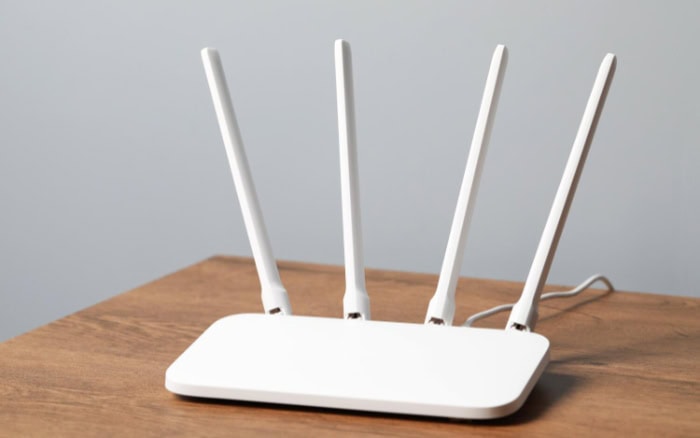Dual-Band vs. Tri-Band Router: Differences and Benefits

The modern household or office often relies on dozens of connected devices, from laptops and smartphones to smart TVs and IoT gadgets. With so much competition for bandwidth, picking the right router has never been more important.
For many, the choice boils down to dual-band versus tri-band—a decision that can directly impact the speed, stability, and overall reliability of your network. But what exactly do these terms mean, and how do they affect your internet experience?
Technical Specifications and Core Differences
Choosing between a dual-band and a tri-band router starts with understanding how they handle wireless frequencies, speed potential, and device capacity. These technical foundations play a significant role in determining which type of router is better suited for different environments and levels of network demand.
Frequency Bands
A dual-band router operates on two frequency bands: 2.4 GHz and 5 GHz. The 2.4 GHz band is known for its extended range and ability to penetrate walls and obstacles, making it a reliable option for general internet use across larger spaces.
On the other hand, the 5 GHz band offers faster speeds over shorter distances and is ideal for bandwidth-heavy activities like streaming in high definition or gaming online.
Tri-band routers step up the game by adding a second 5 GHz band to the mix. This additional band is particularly valuable in environments with many connected devices.
It reduces congestion by splitting traffic between two high-speed 5 GHz channels, which means less lag and better performance for multiple users engaging in data-intensive tasks simultaneously. The inclusion of a second 5 GHz band ensures smoother operation in smart homes or offices with devices constantly competing for bandwidth.
Speed and Throughput
Speed is one of the most noticeable differences when comparing dual-band and tri-band routers. Dual-band routers often fall into categories like AC1200 or AC1900, which represent their total theoretical maximum bandwidth across both frequency bands.
For example, an AC1900 router might offer speeds of up to 600 Mbps on 2.4 GHz and 1,300 Mbps on 5 GHz. While these numbers sound impressive, real-world performance is usually lower due to interference, device compatibility, and environmental factors.
Tri-band routers, such as those in the AC3200 range, take speed to another level by distributing traffic more effectively. With two separate 5 GHz bands, tri-band routers can prevent bottlenecks when multiple devices are being used for high-speed activities.
Gamers, streamers, and remote workers benefit greatly from this technology, as it helps maintain fast, stable connections even under heavy network loads. While the theoretical speed of a tri-band router is higher, its real strength comes from sustaining consistent performance when multiple devices are connected.
Device Capacity
The growing number of connected devices in modern homes often tests the limits of a dual-band router. Most dual-band models are well-suited for handling 10 to 15 devices simultaneously, which is typically enough for smaller households with moderate internet usage.
However, as the number of connected gadgets increases, smartphones, laptops, smart TVs, tablets, and IoT devices such as security cameras, network congestion can start to slow things down noticeably.
Tri-band routers excel in high-density environments with 20 or more devices connected at once. By splitting device traffic between three separate bands, they prevent overload and deliver a more seamless experience.
Smart homes, large offices, and families with tech enthusiasts often see significant benefits due to the ability of tri-band routers to manage heavy network traffic efficiently. The additional capacity ensures that every device maintains a strong, stable connection, even during peak usage times.
Performance and Use Case Scenarios

The choice between a dual-band and tri-band router often comes down to how they perform in real-life situations and the specific needs of the user. From basic streaming and gaming to demanding applications in high-density environments, each type of router has its strengths.
Dual-Band Strengths
Dual-band routers offer a practical and efficient solution for smaller households with moderate internet needs. They provide reliable connectivity for tasks such as web browsing, basic streaming, and casual gaming without breaking the bank.
Many dual-band models are designed to balance affordability with good performance, making them ideal for users who don't require extensive capabilities or have fewer devices connected at one time.
The 2.4 GHz band provides wider coverage, enabling devices to stay connected across the home, while the 5 GHz band delivers faster speeds for bandwidth-intensive activities performed closer to the router. For homes with around 10 to 15 devices, such as a couple of computers, smartphones, and perhaps a smart TV or gaming console, dual-band routers can handle tasks smoothly with minimal lag or interference.
Their cost-effectiveness makes them attractive for users looking to set up a reliable network without overspending on features they might not fully utilize.
Tri-Band Advantages
For homes and offices with higher connectivity demands, tri-band routers offer enhanced performance and bandwidth management. With three frequency bands, including two separate 5 GHz channels, tri-band routers excel in managing network traffic effectively in high-density situations.
They are particularly well-suited for environments like smart homes, where an increasing number of devices, such as cameras, sensors, and voice assistants, are constantly connected to the network.
Bandwidth-heavy activities, such as 4K streaming, virtual reality gaming, and large file transfers, are handled more efficiently on a tri-band router. The additional 5 GHz band helps distribute the load more evenly, significantly reducing network congestion.
Gamers can enjoy low-latency connections, while streamers and remote workers benefit from faster, more reliable speeds, even during peak usage times. Tri-band routers are also ideal for families or office setups where multiple users are connected simultaneously, each engaging in activities that demand high-speed internet.
Impact of Space and Density
The physical layout and size of the space play an important role in determining router performance. Dual-band routers are often sufficient for smaller apartments or single-story homes, where the simpler 2.4 GHz and 5 GHz frequencies can provide adequate coverage without requiring advanced load management.
The 2.4 GHz band offers better penetration through walls, while the 5 GHz band covers shorter distances effectively.
In larger homes or offices with multiple floors, tri-band routers tend to perform better due to their ability to handle more devices spread across a wider area. They also shine in crowded environments, where neighboring Wi-Fi networks might create interference.
With the availability of two high-speed 5 GHz bands, tri-band routers can maintain stable connections and reduced congestion even in densely populated areas. For spaces with numerous connected devices spread across different rooms, their ability to balance loads more efficiently ensures uninterrupted performance throughout the home or workspace.
Cost-Benefit Analysis

The cost of a router is an important consideration for most buyers, but it's equally important to weigh the long-term benefits against the initial price tag. Dual-band and tri-band routers vary significantly in terms of cost, futureproofing potential, and suitability for different user needs.
Price Comparison
Dual-band routers are generally the more affordable option, with prices ranging from $60 to $300. Basic models provide reliable performance for everyday tasks, making them an excellent choice for households that prioritize functionality without unnecessary extras.
Higher-end dual-band options offer better speeds and features but remain less expensive than most tri-band alternatives.
Tri-band routers, on the other hand, come at a premium, with prices starting around $150 and reaching up to $500 for advanced models. The added cost reflects their ability to handle higher device counts and bandwidth demands.
For users with plans to expand their smart home setups or accommodate increasing numbers of connected devices, a tri-band router offers substantial long-term value. Investing in a tri-band option can save money in the future by avoiding the need for upgrades or additional network equipment as connectivity demands grow.
Value for Different Users
Dual-band routers provide great value for users with modest connectivity needs. Small households or individuals with fewer devices often find dual-band models more than sufficient for streaming, gaming, and browsing.
However, purchasing a tri-band router in such scenarios can lead to overprovisioning, where the features and capabilities far exceed the actual network demands, effectively wasting money on unused potential.
In environments with heavy bandwidth usage, tri-band routers justify their higher price point. Homes equipped with multiple smart devices, office spaces, or families that frequently rely on high-speed internet for 4K streaming, online gaming, or large file transfers benefit greatly from the additional capacity of a tri-band router.
The extra 5 GHz band ensures smoother performance during simultaneous high-demand activities, making the investment worthwhile for tech-heavy setups. While the initial cost may be higher, the ability to handle increasing network demands without performance drop-offs adds lasting value for users with intensive internet usage.
Challenges and Limitations

While both dual-band and tri-band routers can significantly improve wireless networks, they are not without their challenges. Factors such as signal interference, setup requirements, and device compatibility can impact their effectiveness, particularly when operating in environments with unique constraints or older technology.
Interference Issues
Wireless interference is a common challenge for dual-band routers, particularly on the 2.4 GHz frequency. This band is often crowded due to its widespread use in household devices such as microwaves, Bluetooth gadgets, and even neighboring Wi-Fi networks.
The resulting interference can degrade performance and lead to frequent signal drops, especially in densely populated apartment buildings or urban areas. Although dual-band routers provide the option to switch to the 5 GHz band, doing so comes at the cost of reduced range, which might not adequately cover larger or multi-level spaces.
Tri-band routers are better equipped to handle interference by splitting network traffic across three frequencies. The additional 5 GHz band mitigates congestion by allowing high-speed devices to connect to a less crowded channel.
This design improves performance in environments where multiple devices compete for bandwidth, such as homes with overlapping Wi-Fi signals from neighbors. However, while tri-band routers alleviate congestion, they cannot completely eliminate interference from other devices targeting the same frequency.
Setup Complexity
Tri-band routers offer more advanced features but can also be trickier to configure. Unlike dual-band models, which often handle band switching automatically, tri-band routers may require manual adjustments to optimize performance.
For example, users may need to assign specific devices to particular frequency bands to ensure balanced network traffic and avoid overloading a single channel. While some routers include intelligent band-steering features that simplify this process, others require more hands-on management.
Dual-band routers are generally easier to set up, often operating with minimal user intervention. Their straightforward configuration makes them attractive to users with limited technical knowledge.
However, as connected devices evolve and demand more bandwidth, manual adjustments might still be necessary to maintain performance, even on dual-band systems.
Compatibility Concerns
Device compatibility is another factor to consider, particularly for households or offices using older technology. Many legacy devices only support the 2.4 GHz band, which can lead to compatibility issues when paired with advanced dual-band or tri-band routers.
While these routers still support 2.4 GHz connections, relying on this band for outdated devices can lead to slower speeds and network congestion, especially if newer devices are also competing for bandwidth on the same frequency.
The 5 GHz band, though faster, is not universally supported by all devices. Some older laptops, printers, or smart home gadgets lack compatibility with 5 GHz frequencies, limiting their ability to leverage the full potential of a dual-band or tri-band router.
Before upgrading to a tri-band system, it is important to ensure that most existing devices can take advantage of the additional high-speed bands to avoid wasting potential benefits.
Conclusion
Selecting the right router depends on matching its capabilities to your connectivity needs. Dual-band routers shine in smaller households with moderate device counts, delivering reliable performance for everyday tasks at a more affordable price.
In contrast, tri-band routers are ideal for environments with higher bandwidth demands or a large number of connected devices, offering greater capacity and less network congestion.
Factors like household size, device usage, future connectivity needs, and budget all play a role in determining the best fit. While dual-band routers are a practical choice for simpler setups, tri-band routers provide the scalability and performance required for technologically intensive spaces.
Investing in the right router ensures smoother internet performance today while preparing for increased demands tomorrow.


